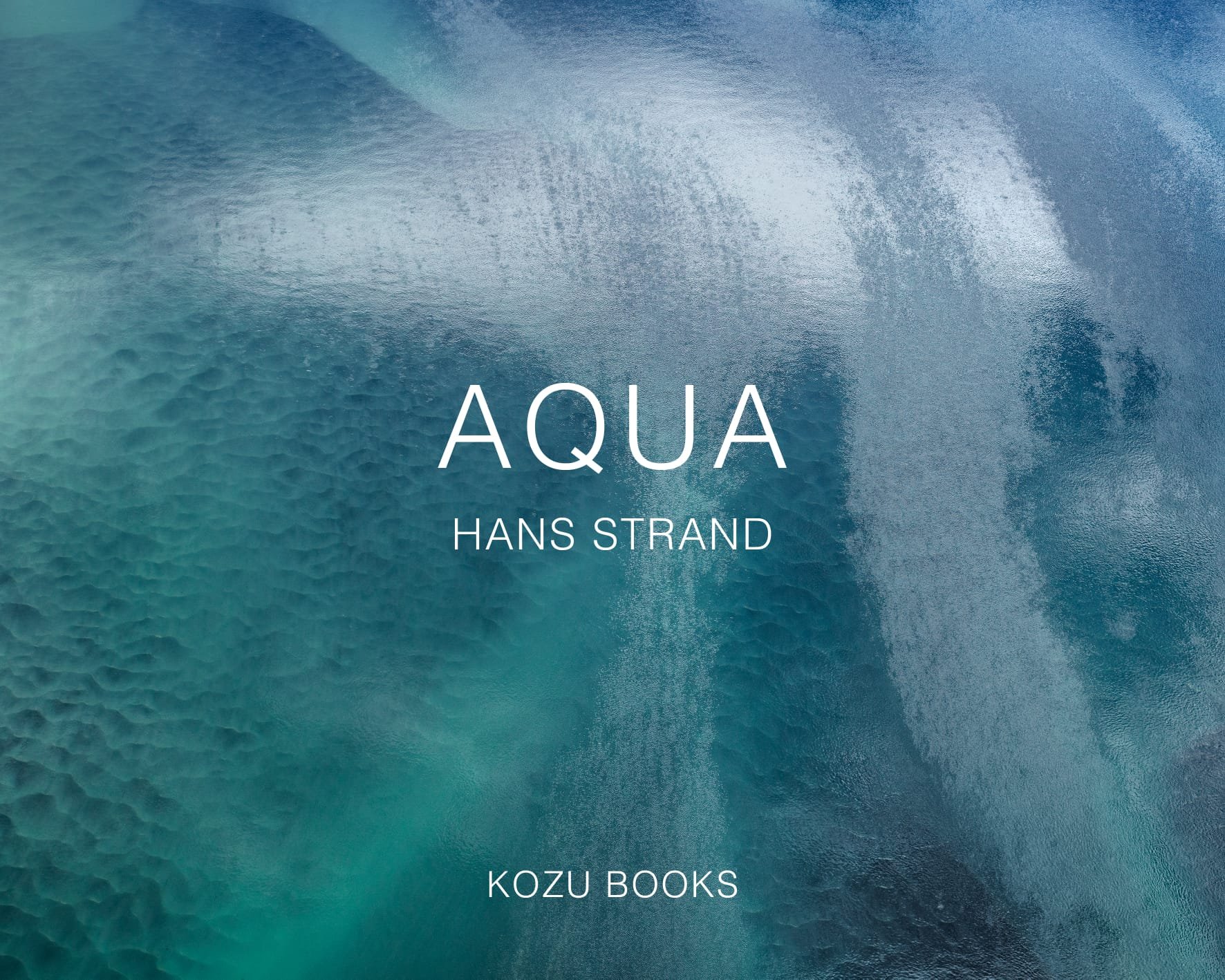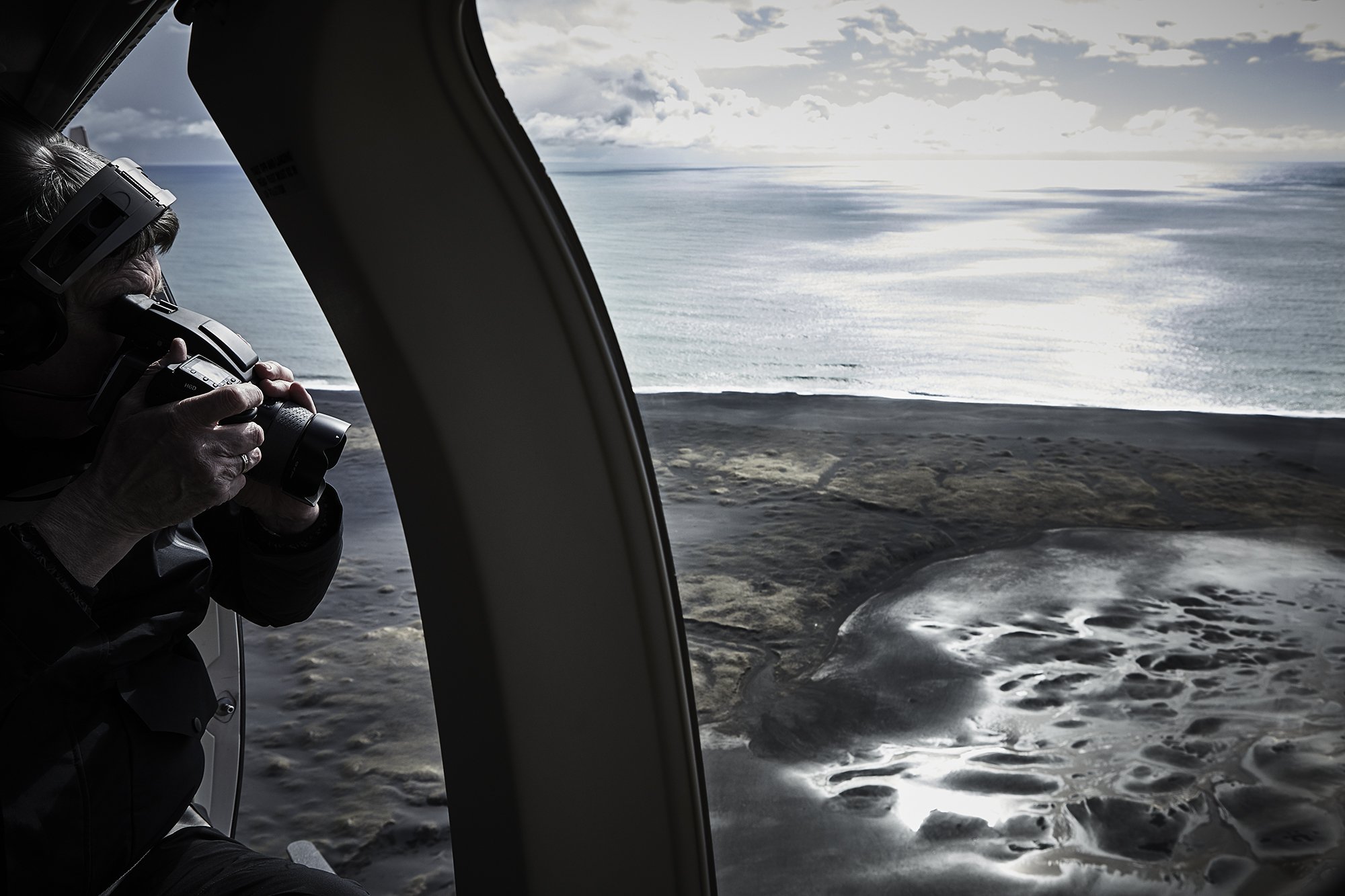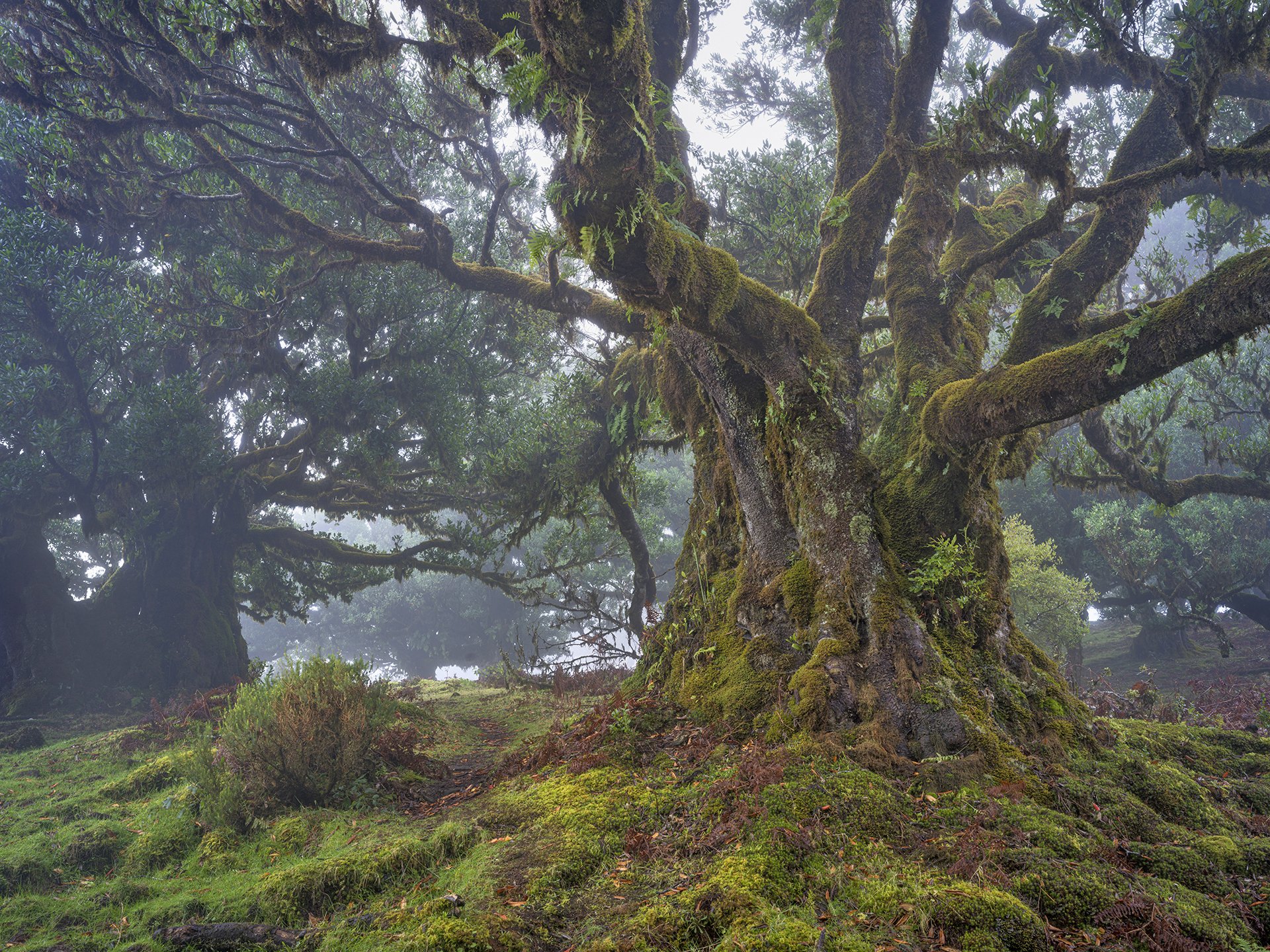
About Hans Strand
Hans Strand, born in 1955 in Marmaverken, Sweden. In 1990, after a nine-year career in mechanical engineering he decided to devote his life to landscape photography. Its a change he never regretted. Hans has always felt himself drawn to the untamed and unmanipulated emotions and expressions that he finds in nature.
He often says: ”The wilderness is the mother of all living things. It is always true and never trivial”. Hans work takes him to diverse places worldwide; from polar deserts to steaming rainforests and expansive deserts. The internationally awarded landscape photography is seldom a portrait of a place, but an expression of forces that create and mold a landscape. Hispictures, frozen in a static frame, still tell a story of movement, time and evolution. Lately his photography has also taken a course away from the untouched and wild nature and focused more on people´s influences on ecosystems. Photographs of water pollution and the visual magic of manmade agricultural landscapes have become an important ingredient in his in recent work.
Hans Strand is frequently published in international photo and art magazines and his work has created a worldwide following. He has won thirteen international awards, including the Hasselblad Master Award in 2008. He has published seven books, often with themes relating to the environment and peoples relations to nature and landscapes.
Books
AQUA is my newest book showing my fascination for water in all its states: as solid, liquid and gas. This from small to large. You can order the book directly from the publisher Kozu Books. Order here
Beyond Landscape is showing my fascination for abstractions, structures and patterns in the landscape. This from small to large. You can order the book directly from the publisher Kozu Books. Order here
Island
This is a retrospective showing the result of 23 years photographing this fantastic island. It covers both images from ground level and from above. Results of thousands of kilometers of criss-crossing the land by 4WD and more than 130 hours photographing from the air from Cessnas and helicopters. It is a big book sized 29x37cm and 330 pages. Text in German. Orders can be made here
Buy Fine Art
All of Hans Strand exquisite fine art prints are signed in limited editions. You can choose from a range of motives from different series such as Man Made Land or his world renowned Icelandic Landscapes. All orders and enquires are placed here or here: strandphoto@telia.com
Normally prints are delivered in three different sizes: 50x37,5cm edition 6 prints, 100x75cm edition 6 prints and 150x113cm edition 3 prints. However sizes might vary since some pieces have different proportions and some prints are made even larger. The pieces are made as pigmented ink prints printed on state of the art archival fine art paper and delivered signed and numbered with a certificate of authenticity. The pieces are delivered unmounted or mounted on the demand of the client.
Projects
Manmade Land
Rio Tinto Mine
Ever since man became Homo Sapiens we have manipulated and undulated the world we live in. The big changes came with the development of agriculture some 7000 years ago. The land around the Mediterranean Sea got deforested by man and great erosion problems started as an immediate consequence. The fertile soil was flushed away by rains and left was just bare rock. In Spain there was still soil enough, which could be used for farming. The problem here was the lack of water in the dry climate. To use the land in the best way, farmers started to grow the crops during the winter season, this when the precipitation was enough the make the crops grow. They then harvested in the spring before the soil got too dry from the summer heat. In many areas of Spain this way of dryland farming is still practiced. It is a sustainable method, since no irrigation is used. Still the land is more or less completely consumed for farming. Specially in the provinces of Andalusia and Aragon there is almost not a single square meter which is not tamed and undulated by man and used for farming. This has resulted in huge monocultures. The diversity of plants which once grew here is erased and gone forever. From the air this land look both scary and fantastic at the same time. From an artistic point of view it is specially unique. The farm fields have taken on incredible shapes and patterns and you can easily make parallels to expressionistic art. The farmers, of course had no aesthetic intentions when they reshaped the land. The shapes of the fields are just results of the topography and the farming technics.
Photographs
Scandinavian Landscapes
Voxnan River
Living in the Northern corner of Europe, it has been natural for me to depict the Scandinavian landscape. It is a varied landscape with coasts, rivers, wetlands, forests and mountains. In the beginning of my career I was very much focused on the big scenes like the mountains of the North. It resulted in several long and strenuous hikes into the heart of Sarek National Park in Swedish Lapland. Unfortunately I don´t have the physical strength to do this anymore. A bad back has put an end to this. Instead I have gradually focused on more accessible landforms, which I have found along the Scandinavian coasts, in Sweden and on the Lofoten Islands in the Northern part of Norway. The coastal landscapes offers more or less the same open landscape feeling as I got when photographing the mountains. Here I have tried to interpret the interaction between atmosphere and land in my photographs. Changes in weather especially implement great proportions of drama in the coastal landscapes.
Growing up next to River Ljusnan in the province of Hälsingland, Sweden, I have always had a fascination for water. I simply like to photograph water in all its forms: still and calm providing reflections and a feeling of tranquility, vivid and wild providing a sense of power etc. When opening an exhibition with more than 50 prints a couple of years ago I realised there was water in every single photograph.
The Scandinavian forests also have a place deep in my heart. There is nothing more calming for a stressed mind than walking through a forest. Trees are stationary and stabile elements that have a positive influence on the human mind. It is not without reason that we are hugging trees. In Scandinavia we have large groves of deciduous trees like the beech in the South while the North is dominated by the spruce and the pine of the Taiga. The seasons in the forests: leaves budding in the spring, the colors of the fall and the trees after a heavy snowfall are short but wonderful moments that I passionately try to depict with my camera.
The wetlands are probably our most overlooked landforms. Still perhaps the most mystical. Morning mists rising from the wet moss, rays of sunlight diffracted in the tree canopies and loons calling from open water pockets are typical expressions of the Nordic wetlands. Photographing these small wonders at daybreak always take me on an inner journey where I connect with Mother Nature herself.
Glacier Fallsjökull, Iceland
Water
Water, the most important substance for life on Earth, also a fantastic subject for photography. It transforms between three different phases: solid as ice, liquid as water and gas as steam. This in a a constant circulation driving the weather systems on our planet. Here below I am showing a few photographs illustrating these phases.
I am starting in the mountains where the iceriver is born. Somewhere in the highlands, a glacier is moving slowly over the bedrock. It grinds the stone underneath into a fine powder called silt. Rain and meltwater from the glacier mixes with the silt and starts its journey towards the sea as an ”iceriver". First as a small rivulet, then merging with more melt water and gradually expanding to become a full size river. Its heavy content of silt makes it milky white in color. On its way to the ocean the water will be guided by gravitation. As a photographer few things excites me as much as following the progress of the flowing water. On its way to the ocean it follows the law of least resistance which draw the mobile water past obstacles down to ever new levels and to plunge into gorges as huge waterfalls. The gravitation is the director of the interaction with the surrounding landscape. Gravity creates beauty and waterfalls are like magnets to the human eye.
Water is not just a molecule of two hydrogen atoms and one oxygen. It also dissolves and transport other substances. As described it transports the silt from higher elevations to lower ground. As the rivers get closer to the ocean they will reach flatter land, slow down in speed and feed the wetlands with necessary water and before the rivers finally get a salty kiss from the ocean, they often transform into magnificent deltas along the coasts. On the South Coast of Iceland the deltas are gigantic and specially interesting to view from above. Since the land is almost completely flat, the influence of gravitation is reduced to almost zero. The water therefore flows in all kinds of directions, resulting in extremely complex flow patterns. Here in the slow flowing water the content of silt and iron-oxide, extracted from the volcanic soil, will sediment into colourful sand banks along the river. Observed from above the branches of the rivers look like fractals and even like human veins.
All these rivers, lakes, wetlands, glaciers and clouds are majestic expressions of the global water system. Majestic they are, but their future is far from bright. The threat from global warming is real and these rivers and their contributing glaciers might not be here 50 years from now. A glacier work like a never drying out source. Its meltwater provides a constant refill of water into the rivers. Therefore stable biotopes can exist along the rivers. If the river run dry the biotope is lost and also a whole echo system.The glaciers in Iceland now retracts 50-100m per year, due to the rise of temperature. A hopeless equation indeed. During my 23 years of travelling to Iceland I have seen dramatic changes in the water systems. The water supply to several wetlands have stopped due to shrinking glaciers, resulting in a fast dry out. The future absence of glaciers will have a dramatic influence on the water supply not only in Iceland, but even worse in Southern Europe. The glaciers of the Alps are doomed to disappear by 90% at the end of this century and only those situated higher than 4000m will remain.
Intimate LAndscapes
Fallen Beech
I have always been a lover of the subjective photograph. Whenever horizons are excluded the feeling of location is lost. It is then the poetry can take over and allow you to discover small wonders around your feet and make them into photographic art. The grand vistas may be impressive for the eye, but when it comes to photography you have less possibilities to make something personal from it.
It requires mental balance to extract good compositions from the chaos of Nature. To organize geometry and structures in the viewfinder, is an intellectual challenge which makes my wheels spin. You have to take the landscape in and when you are one with your surroundings, all of a sudden you start to see compositions everywhere. There is an expression in Zen archery: If you are in the right spiritual mode, you will hit the centre of the target as an unimportant consequence.
The forest is perhaps the most complex landscape you can photograph. Its chaos is a hard nut to crack, but just being surrounded by trees gives me a feeling of comfort which makes me both relaxed and concentrated. Sometimes a morning mist have stretched out a helping hand to organize my compositions. The mist fades the background and makes the images less chaotic.
In ice and sand I have sometimes found almost mathematical order where repetition is making interesting patterns. The outcome of these close ups sometimes look like aerial photographs or even like samples viewed in a microscope. To me it proofs that the our world is fractal.
"Ice Ghost", Disko Bay, Greenland 2016
Arctic and Antarctica
Hans Strand has a strong affection for the polar regions. The wide expanses and a feeling of unfettered infinity inspires his photography. Nowhere on Earth are the elements presented so naked as in the Arctic and the Antarctica. Barren landscapes, ice fields and weather interact to create a relentless environment where beauty and one’s emotions are laid bare. For the human visitor it is a humbling experience – a frail existence at the mercy of Mother Nature. While the landscape is grand and sometimes overpowering, in the photographer it instills a feeling of creating minimalistic images.
But the feeling of eternal beauty is a false one. Global climate change is a threat to the polar regions. The polar ice cap is melting in a warmer world, and already in this century the Arctic ocean will be ice free in the summertime. For polar bears and other animals uniquely adapted to a life in the polar regions, the future looks bleak. Destructive exploitation of resources like oil, gas and minerals, adds to the uncertain future facing the Arctic. In the face of such dire circumstances and prospects, Hans Strand’s photography has turned from the pristine nature to depicting Man’s influence on polar environments.
Iceland
The Highlands 2013
My love affair with Iceland started in 1995. At that time Iceland had not yet become the fix star for tourism as it has become today and few photographers had been there. I spent 3 weeks driving around the island on bumpy dirt roads and did several hikes into the highlands. The beauty of the landscape blew me away. I realised that 3 weeks of photography was way too short time to do this fantastic country justice. As a result I have now made a total of 30 trips and spent almost a full year photographing the island. I have criss crossed the landscape with 4W-drives and spent 110 hours shooting aerials from planes and helicopters. I have tried to avoid the most popular tourist locations. This to make my own interpretations of a unique landscape. On top of all these planned photography, I was also blessed with the opportunity to photograph the eruption of Eyjafjallajökull in May 2010. An experience where the volcanic temperament of Mother Earth showed up right in front of my camera.
Workshops and Mentorships
One-to-one workshops.
I am doing one-to-one workshops, both in aerial photography and from ground level in Iceland, Sweden and in Spain.
For scheduling and pricing, send an email to: strandphoto@telia.com
Mentorship.
You can sign up for a one year mentorship where you will develop your skills in composition and realistic post processing. One year mentorship with 10 online sessions is €900. To sign up, send an email to: strandphoto@telia.com
Workshops with other partners:
Workshops with Swedish tour operator Fotomagica (all info in Swedish. For assistance please e-mail)
Workshops in Southern Sweden and Madeira with Norwegian tour operator Lofoten Tours:
Winter Workshop in Lofoten with Norwegian college Trym Ivar Bergsmo:

















